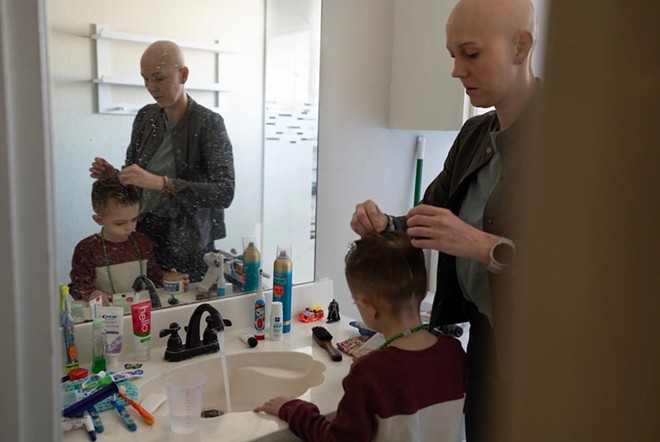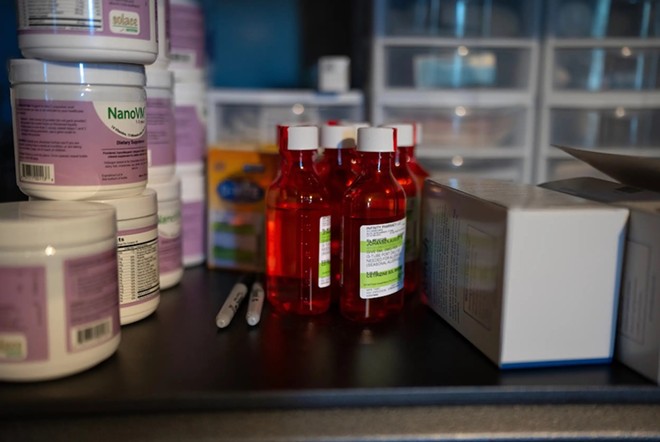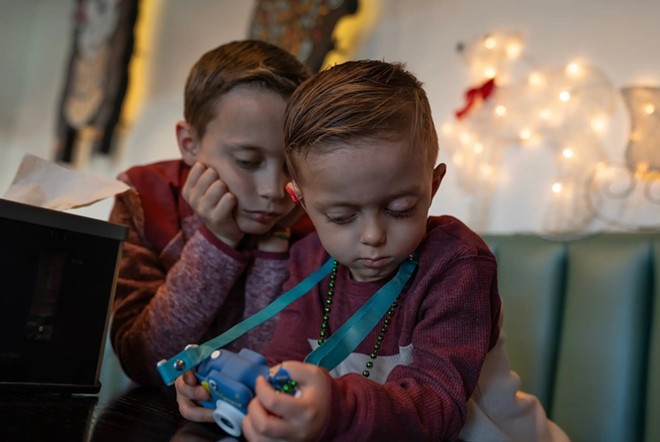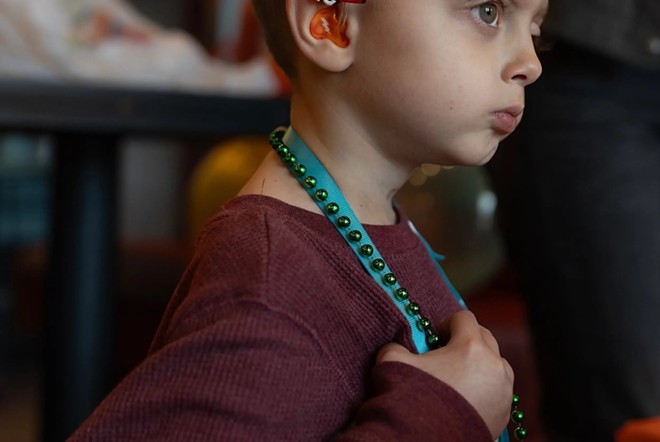
An impossible task. That’s what Randy Fritz was faced with in the summer of 1999.
As executive assistant to then-Texas Health Commissioner William “Reyn” Archer III, Fritz had 10 months to create from scratch a new statewide health insurance program for poor kids who did not qualify for Medicaid.
Why the rush? There was public pressure to get the program rolling after a recalcitrant Texas Legislature had been slow to adopt what leadership Republicans regarded as an entitlement.
But underlining the urgency was the fact that Gov. George W. Bush had recently announced his candidacy for president — and his allies on both sides of the aisle in the Legislature knew that a successful program would give him a boost if he made it through the primaries to become the Republican nominee, Fritz said.
At the time, the massive Texas Children’s Health Insurance Program, or CHIP, existed only on paper, the Legislature having just passed it weeks earlier as the state version of a 1997 federal program.
These kinds of programs can take years to create and build up, but Fritz and his counterpart at the agency, Texas Health and Human Services Commission, had to get it off the ground by spring 2000 and deliver gangbuster enrollment numbers in a few months, Fritz recalled.
In California, which at the time had a population of 33 million, it took two years to enroll 400,000 children. Fritz’s directive from state budget leaders, who were also Bush allies, was to eventually enroll nearly half a million kids in the first 18 months.
Fritz figured the tight deadline was being employed as an effective way to make sure that “we went bananas with the enrollment” in time to get good enough numbers to use in the campaign, he recalled in an interview Monday with The Texas Tribune.
“We were told in no uncertain terms (by a powerful Democratic lawmaker who worked on Bush’s campaign team) that our careers would suffer if we didn’t deliver,” Fritz said. “He provided no context or explanation for that directive, but we didn’t need that. We knew why he was putting the screws to us.”
Whatever the motivation, what followed was a powerful illustration of what a state can accomplish when the goal is to cover as many Texans as possible in as short a time as possible.


A quarter century later, the state has faced a different massive challenge. After going years during the pandemic without ending Medicaid and CHIP coverage for anyone, Texas Health and Human Services began the process last spring of rechecking the eligibility of anyone on the rolls. Some 2.1 million people were dropped at least temporarily as of late February. Only 700,000 were determined ineligible — the other more than 1.3 million who lost coverage because the state couldn’t confirm their eligibility.
State officials said they worked hard to keep eligible people enrolled, and hired new staff to get the job done. But advocates for the poor and disabled say other states did more — and they found themselves wishing for a 1999-like effort from Texas again.
“It was a scenario where Democrats and Republicans and the governor, especially, said, ‘This is what needs to happen for children. We're going to get some bureaucrats to figure out how to actually operationalize it. And we're not going to worry about all the details. We just know that the job is getting as many kids enrolled for that program as possible because they need it. It's very important,’ ” Fritz said.
What was at stake in 2000
From the advocates’ point of view, success in 1999 also meant that Texas — which was and still is the state with the highest rate of uninsured kids — would finally be addressing an urgent need.
Good enrollment numbers would also give Bush a needed “compassionate conservative” counter to then-Vice President Al Gore, the Democrats’ frontrunner for 2000, who had turned the wildly popular 1997 bipartisan federal children’s health insurance legislation into a compelling campaign message.
Fritz said it was clear that if the state’s health and human services workers screwed up the rollout, “we would be crucified” both by those with political plans riding on it, and perhaps by a public counting on them to get it right.
Pete Laney, a Panhandle Democrat who was state House speaker at the time — during which every statewide office holder was a Republican — said that while the program had its detractors, it generally had bipartisan support.
“It was a public relations star for some folks, it was good government for some folks, and it was, ‘It satisfies my constituents’ for some folks,” Laney recalled.
Then-Health and Human Services Commissioner Don Gilbert and Archer, gave the state’s health commissioner, Fritz and others carte blanche to decide things like how to structure the program, which providers to include and which contractors to hire for jobs like software design.
Public awareness campaigns were mobilized. Easy-to-follow, illustrated application forms were designed, and processes that helped applicants bypass long arduous in-person interviews were put in place. State workers and volunteers fanned out across the state to educate Texans about qualifying for coverage.
It worked.
The state’s enrollment campaign began in May 2000. By the time Bush faced off against Gore in the Oct. 11, 2000 debate, they had enrolled 87,000 kids in the first five months — a fact Bush was able to boast about. (Bush said 110,000 but was later corrected in follow-up statements.)
By the time September 2001 came around a year later, the new Texas program had reached full enrollment with 428,000 kids.
That’s an average of nearly 800 kids per day, a triumph for the politicians who needed a win — and a heady victory for the social advocates who had long been frustrated by the the state leadership’s lack of energy behind addressing the uninsured crisis.
Had the program kept pace with the California timeline, which was typical of the rollouts in other states, it would have taken the state until 2004 to reach that level of enrollment.
“It was a wonderful time,” recalls Anne Dunkelberg, a retired health policy expert with Every Texan, a progressive think tank in Austin, who was involved in the initial enrollment push. “We had both a huge pent-up demand for CHIP, and we had really strong, good-faith permission to try to drive up enrollment. It was clear they had a big, bright green light to do it, and do it aggressively, and do the best job they could. The outreach to get CHIP enrollment going was an example of how Texas can clearly do a bang-up job if they chose to.”
'The environment is flipped'
Some two decades later, HHS – the same state agency that was tasked with covering as many children as possible during the genesis of CHIP – faces scathing criticism for the way the agency has dropped millions of Texans from the Medicaid and CHIP rolls
The process has led officials at the agency to hire more workers and promise better efficiency in the future as the “monumental task” winds to a close.
The state has a May 31 deadline for the year-long process of updating its rolls in the aftermath of the COVID-19 pandemic, during which time federal regulations barred states from removing people from Medicaid or CHIPs. Some 6.1 million Texans were able to access health care continuously, a 50% increase from the typical estimated 4 million recipients.
But when these protections were lifted a year ago, the state began rechecking the eligibility of all adults and children on Medicaid and CHIP and requiring everyone to reapply for benefits through a system that had not dropped anyone for the past three years.


Officials at Texas Health and Human Services, which oversees Medicaid/CHIP programs, say they will likely complete the task a few weeks early. The rolls have returned to pre-pandemic levels, with just over 4 million people still on the programs.
In the months since the state launched this “unwinding,” critics have said it is being done too quickly and has resulted in too many qualified people being dropped and losing critical coverage.
It has been “a monumental task” that revealed areas where the state could improve for future similar endeavors, said Tiffany Young, an HHS spokesperson.
“We have learned many lessons from these efforts, not just operationally, but also how to better communicate with providers and clients,” she said. “Our nationally recognized outreach campaign and ambassador network of community providers and stakeholders has built a strong foundation for us to move forward.”
Lawmakers last year earmarked funding for HHS to hire additional eligibility workers to help with the workload created when they began the unwinding. HHS has been able to fill some 97% of those positions, and has also leveraged outside contractors, technology and increased training to meet the workload, Young said.
So far, Texas has a net Medicaid/CHIP enrollment decline of 31.6% — second highest decline in the country. That number reflects people who were disenrolled during the unwinding process, new people entering the program and those who re-enrolled within a short time after being dropped, a dynamic known as “churn.”
When the state couldn’t determine whether a person was eligible, the person was dropped from the rolls. That can happen when people don’t receive or respond to renewal notices or are not clear on what’s required to renew. It can also happen when enrollment workers can’t process the application in time.
“The main concern with procedural disenrollments is that many people losing Medicaid for these paperwork reasons may still be eligible and do not have another source of health coverage,” KFF researchers wrote in a recent report.
Young said that her agency is continuing to seek ways to make the process easier and more efficient.
“We are actively working on additional opportunities to further streamline and automate our eligibility processes,” she said.
For those concerned about the uncovered-but-eligible Texans without Medicaid, that can’t come too soon.
According to a recent report by Texas 2036, an Austin nonprofit think tank, nearly half of all uninsured children in Texas are qualified for CHIP or Medicaid but are not enrolled.
Texas has notoriously tight restrictions on who may use Medicaid. The vast majority of recipients are low-income children or medically complex kids. It also covers new mothers under a certain income level and some low-income adults with disabilities. Most Medicaid recipients are indigent children of color.
The limitations have served to keep the rolls low, but the lack of eligibility requirements is only part of the reason Texas has lower participation.
“It's very attention-grabbing to actually cut Medicaid eligibility or cut Medicaid benefits,” Dunkelberg said. “But you can have a huge effect on reducing Medicaid enrollment by limiting outreach, limiting application assistance, making it harder to get enrolled and to stay enrolled, whether by state law or under-the-radar agency actions.”
Under Republican Govs. Rick Perry and Greg Abbott, administrative processes have been “dramatically weaponized” as illustrated by not just the current unwinding but by declining numbers and increasing red tape attached to the programs both by agency actions and legislative inaction, Dunkelberg said. Abbott’s office did not return a request for comment.
As examples, she pointed to how changes in agency rules, like a lack of focus on how to better educate immigrant parents about the right to Medicaid and CHIP for US citizens and immigrant kids who have legal documentation can have great impact, advocates say.
Losing a critical function
For a frightening moment last summer, 5-year-old August Johansen was one of the kids to lose coverage.
The McKinney boy had inoperable brain cancer and depended on Medicaid to pay for full-time home nursing care from a private agency.

He had been getting care through a specific Medicaid program for “medically dependent” children, which covered kids like him even if their family’s income didn’t qualify them for Medicaid or CHIP.
August had a number of health challenges associated with his cancer, including effects from a stroke, deafness in one ear that required him to go to a school for deaf students, and for 3-and-a-half years, a tracheostomy tube that required his mother to travel with a nurse any time she left the house with her son.
“Medicaid is a critical function for us being able to provide the care that he needs between the pharmacies and the private duty nursing and then, of course, the actual care itself that he receives for the acute situation,” said his mother, Erica Olenski Johansen. “I mean, there's a lot involved, obviously, when you have a kid with medical complexity.
The re-enrollment process had snagged when Johansen missed the paperwork for renewal over last summer because she wasn’t looking for it. But her son should have maintained his coverage because it wasn’t income-based, she said.
In November she got notice that he’d be dropped. Her new income levels prevented her from re-enrolling, even though her income wasn’t a factor in August’s eligibility. Then on Dec. 1, he lost coverage and nursing care.
And it wasn’t until then that an HHSC official was able to help her restart his benefits 10 hours later and resume care the following week.
“They were very apologetic, which I appreciate,” she said.
August had one thing going for him, though: A mother who had worked for years in the health care industry and who was adept at navigating it.
Hundreds of thousands of Texans were not so good at avoiding the bureaucratic landmines.
Texas 2036’s researchers wrote in February that these persistent “administrative barriers” should be addressed by lawmakers when they convene in January 2025 for a new session and budget cycle. “Texas policymakers could make significant inroads toward reducing the state’s uninsured population by increasing awareness of the availability of affordable health coverage options, reducing bureaucratic and administrative complexity during the enrollment process, and improving the customer experience for Texans seeking out coverage,” the report says.
In some other states, enrollees are given administrative express lanes to help with the unwinding and reapplication process — like automatic eligibility if the family already qualifies for food assistance, for example.
Those in Texas who recall the scramble to enroll kids in CHIP during the election season of 2000 say it’s difficult now to watch other states make it easier for qualified people to stay covered — while the processes they put in place decades ago to get so many low-income kids covered have fallen by the wayside.
“The environment has completely flipped,” Fritz said. “It’s like it’s no longer a high priority to get kids enrolled and keep them enrolled. It’s exactly the opposite. It’s sort of like, ‘You’re on your own, people.’ This is where we are. Is this where we want to be?”
This article originally appeared in the Texas Tribune.
The Texas Tribune is a member-supported, nonpartisan newsroom informing and engaging Texans on state politics and policy. Learn more at texastribune.org.
Subscribe to SA Current newsletters.Follow us: Apple News | Google News | NewsBreak | Reddit | Instagram | Facebook | Twitter| Or sign up for our RSS Feed
















